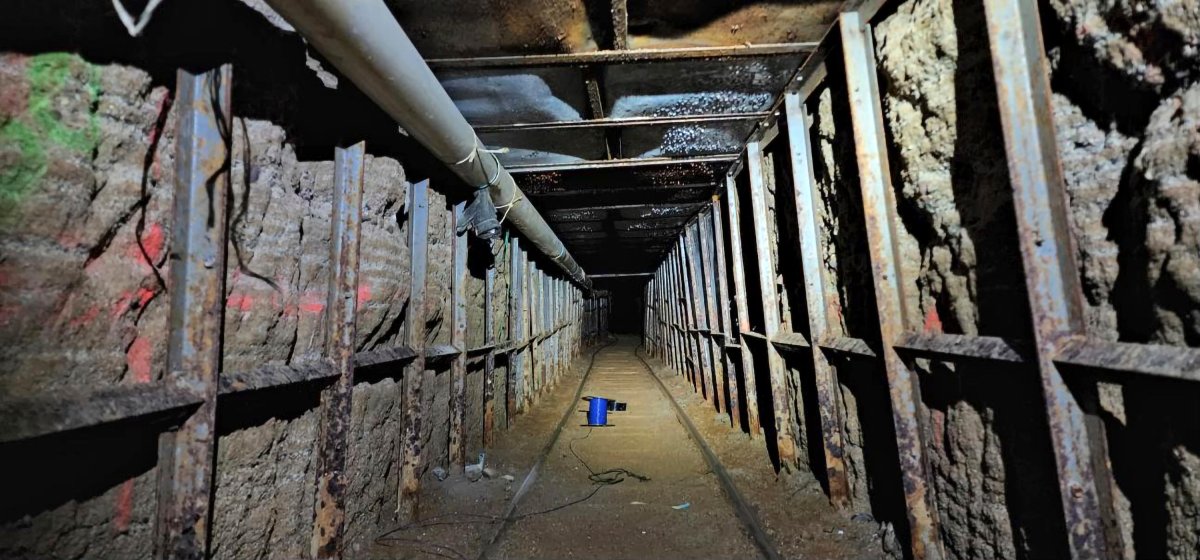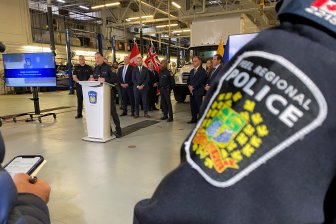U.S. law enforcement discovered a massive drug smuggling tunnel — the length of six football fields — running under the U.S.-Mexico border on Friday.

The sophisticated passageway connected Tijuana, Mexico with a warehouse in San Diego, and included a railway, ventilation systems, electricity and reinforced walls, according to authorities. The tunnel ran 1,744 feet, around a third of a mile, and was 61 feet deep, about six storeys.
Law enforcement is unsure of how long the tunnel was operating but seized almost 2,000 pounds of cocaine, 165 pounds of meth and 3.5 pounds of heroin in connection with the investigation, valued at around US$25 million.
Six Californian residents, ages 31 to 55, were arrested and have been charged with conspiring to distribute cocaine. If found guilty, they face life in prison and up to a US$1 million fine.
In the last two decades, more than a dozen well-equipped tunnels have been discovered in the Otay Mesa border area in San Diego, where this most recent tunnel was found.
This area is one of the most fortified parts of the border, illustrating the limitations of Donald Trump’s border wall.
U.S. law enforcement discovered the massive tunnel after staking out a nearby home that was used to stash drugs. Officials began making traffic stops of vehicles that had been to the house and discovered they were also connected to a warehouse called Amistad Park, according to a federal criminal complaint.
“In a span of a few hours, agents watched five vehicles come and go from the stash house and this warehouse, we allege that the defendants were driving into the garage and loading or dropping off cardboard boxes full of drugs to further the movement or distribution of drugs throughout the United States, the federal agents were watching the whole time,” U.S. Attorney Randy Grossman told ABC affiliate KGTV.
Authorities raided the properties and discovered the opening of a tunnel carved into the cement floor of the warehouse.
“There is no more light at the end of this narco-tunnel,” said Randy Grossman, U.S. attorney for the Southern District of California. “We will take down every subterranean smuggling route we find to keep illicit drugs from reaching our streets and destroying our families and communities.”
By federal law, U.S. authorities must fill the U.S. side of tunnels with concrete after they are discovered.
The type of drugs seized may signal a shift from the multi-ton loads of cannabis that were often found in discoveries before California legalized pot for recreational use in 2019.
Hard drugs, such as heroin, methamphetamine and fentanyl, are typically smuggled through official border crossings from Mexico because their small size and lack of odour make them difficult to detect. But tunnels give smugglers the advantage of being able to carry huge loads at lightning speed.
These cross-border passages date back to the early 1990s and the U.S. Drug Enforcement Administration said in 2020 that they are generally found in California and Arizona and associated with Mexico’s Sinaloa cartel.
— With files from The Associated Press








Comments